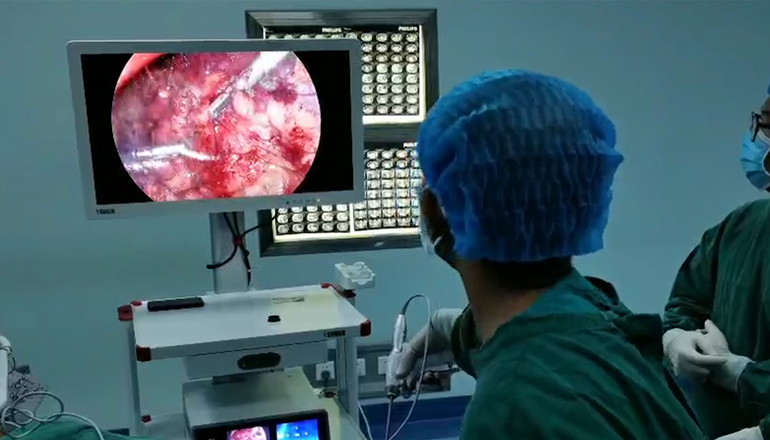- Shanghai, China
- [email protected]
- +86-21-58189111
Urinary system injury is a rare but potentially serious complication of laparoscopic surgery. The urinary system includes the kidneys, ureters, bladder, and urethra, and any damage to these structures can lead to urinary tract infections, incontinence, and other complications.
Causes of Urinary System Injury under Laparoscopy:
There are several possible causes of urinary system injury during laparoscopic surgery, including:
Direct injury: This can occur when a surgical instrument comes into contact with the urinary system during the procedure. Injuries may range from minor lacerations to complete transections of the ureter or bladder.
Thermal injury: The use of electrocautery and other energy-based surgical instruments can lead to thermal injury to the urinary system. This may result in scarring or tissue necrosis.

Trocar injury: During laparoscopic surgery, trocars are used to create small incisions in the abdomen through which the surgical instruments are inserted. If a trocar is improperly placed or inserted, it can cause injury to the urinary system.
Treatment of Urinary System Injury under Laparoscopy:
Treatment of urinary system injury during laparoscopic surgery will depend on the type and extent of the injury. Mild injuries such as minor lacerations or contusions may not require any specific treatment and will heal on their own. However, more severe injuries may require surgical intervention or other forms of treatment.
Ureteral injury: If the ureter is injured during laparoscopic surgery, the surgeon may attempt to repair the injury using a surgical technique known as ureteral reimplantation. In some cases, a stent may be placed to keep the ureter open and allow it to heal.
Bladder injury: If the bladder is injured during laparoscopic surgery, the surgeon may attempt to repair the injury using sutures or other surgical techniques. In some cases, a catheter may be placed to drain the bladder and allow it to heal.
Renal injury: If the kidney is injured during laparoscopic surgery, the surgeon may attempt to repair the injury using surgical techniques such as partial nephrectomy or ureteral stenting. In some cases, the kidney may need to be removed if the injury is severe.
In conclusion, urinary system injury is a rare but potentially serious complication of laparoscopic surgery. The causes of urinary system injury can range from direct injury to thermal injury or trocar injury. Treatment of urinary system injury during laparoscopic surgery will depend on the type and extent of the injury. Mild injuries may not require any specific treatment, while more severe injuries may require surgical intervention or other forms of treatment. It is important for surgeons to take appropriate precautions and follow established protocols to minimize the risk of urinary system injury during laparoscopic surgery.
Prevention of Urinary System Injury under Laparoscopy:
There are several steps that can be taken to help prevent urinary system injury during laparoscopic surgery, including:
Proper patient positioning: The patient should be positioned in a way that allows the surgeon to access the surgical site without putting pressure on the urinary system.
Careful placement of trocars: The trocars should be placed in a way that avoids injury to the urinary system. The surgeon should take care to avoid placing trocars near the ureter or bladder.
Proper use of surgical instruments: The surgeon should use surgical instruments in a way that minimizes the risk of injury to the urinary system. For example, electrocautery should be used with caution near the urinary system.
Awareness of patient anatomy: The surgeon should have a thorough understanding of the patient's anatomy and be aware of any potential variations or anomalies that may increase the risk of urinary system injury.
Proper training: Surgeons should receive proper training in laparoscopic surgery and be familiar with the potential risks and complications associated with the procedure.
In conclusion, urinary system injury is a rare but potentially serious complication of laparoscopic surgery. Proper precautions should be taken to minimize the risk of injury, including careful patient positioning, tro car placement, proper use of surgical instruments, awareness of patient anatomy, and proper training of the surgical team. If a urinary system injury does occur during laparoscopic surgery, prompt recognition and treatment are essential to minimize the risk of complications and improve the patient's outcome. Patients who undergo laparoscopic surgery should be informed of the potential risks and complications associated with the procedure, including the risk of urinary system injury. By taking appropriate precautions and following established protocols, surgeons can help minimize the risk of urinary system injury during laparoscopic surgery and improve patient safety and outcomes.
Leave a Comments